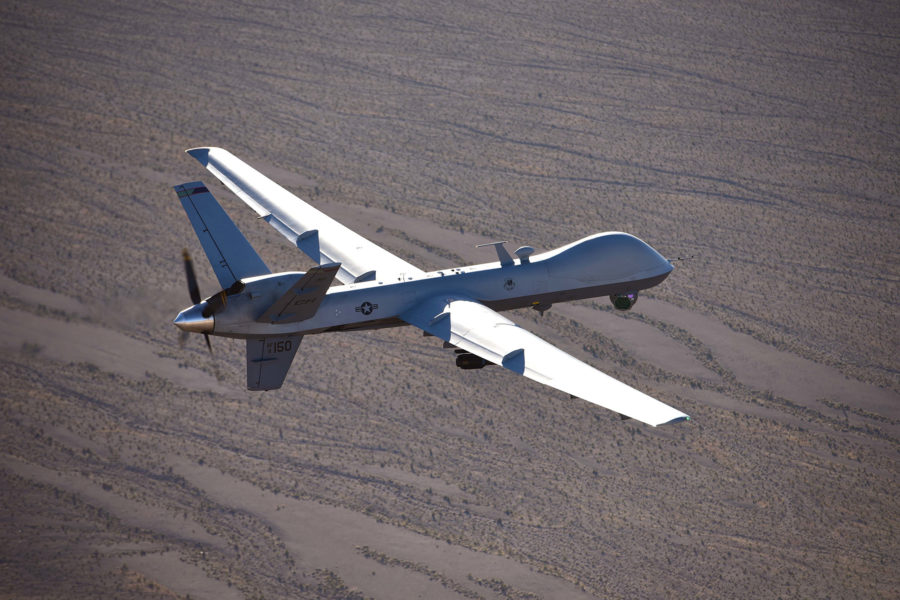An MQ-9 suffered a catastrophic fuel leak while flying in an undisclosed area of Africa, prompting the crew to crash the Reaper as hard as possible into the ground to avoid a successful recovery of the aircraft, according to an Air Force investigation released June 4.
The MQ-9, tail number 08-4051, assigned to the 162nd Wing of the Arizona Air National Guard and operated by the 214th Attack Squadron Mission Control Element at Davis-Monthan Air Force Base, Arizona, was flying a mission in support of U.S. Africa Command, though the Accident Investigation Board report does not provide details on the mission or location.
During the flight, the ground control station began to display warnings that fuel was low, and the aircraft’s crew started looking for the issue so they could clear the fault. The crew found the fuel level was “well short” of expected levels, and the pilot asked the mission crew commander to help.
The sensor operator used the aircraft’s main camera to sweep the aircraft, and discovered it was “severely leaking fuel from the fuselage,” the report states.
About 43 minutes after first discovering the issue, the MQ-9 began to return to base at maximum speed, but the crew realized “the fuel leak was catastrophic” and the Reaper couldn’t make it.
The Combined Air Operations Center directed the commander and pilot to “crash the aircraft, and to do so in a way that would minimize chances of a successful recovery effort,” the report states. With fuel exhausted, the pilot “controlled the glide of the aircraft to optimize the impact point” while increasing speed.
According to the investigation, the aircraft was destroyed at a loss of $11.29 million. It was lost in an undisclosed location and not recovered.
The investigation found that the cause of the crash was the fuel leak from the Forward Electric Fuel Heater. Additionally, the investigation found maintainers did not completed a time compliant technical order to fix a known MQ-9 deficiency with the fuel system, the design of the aircraft’s fuel detection system, and a lack of guidance and tolerances for the fuel system contributed to the mishap.
